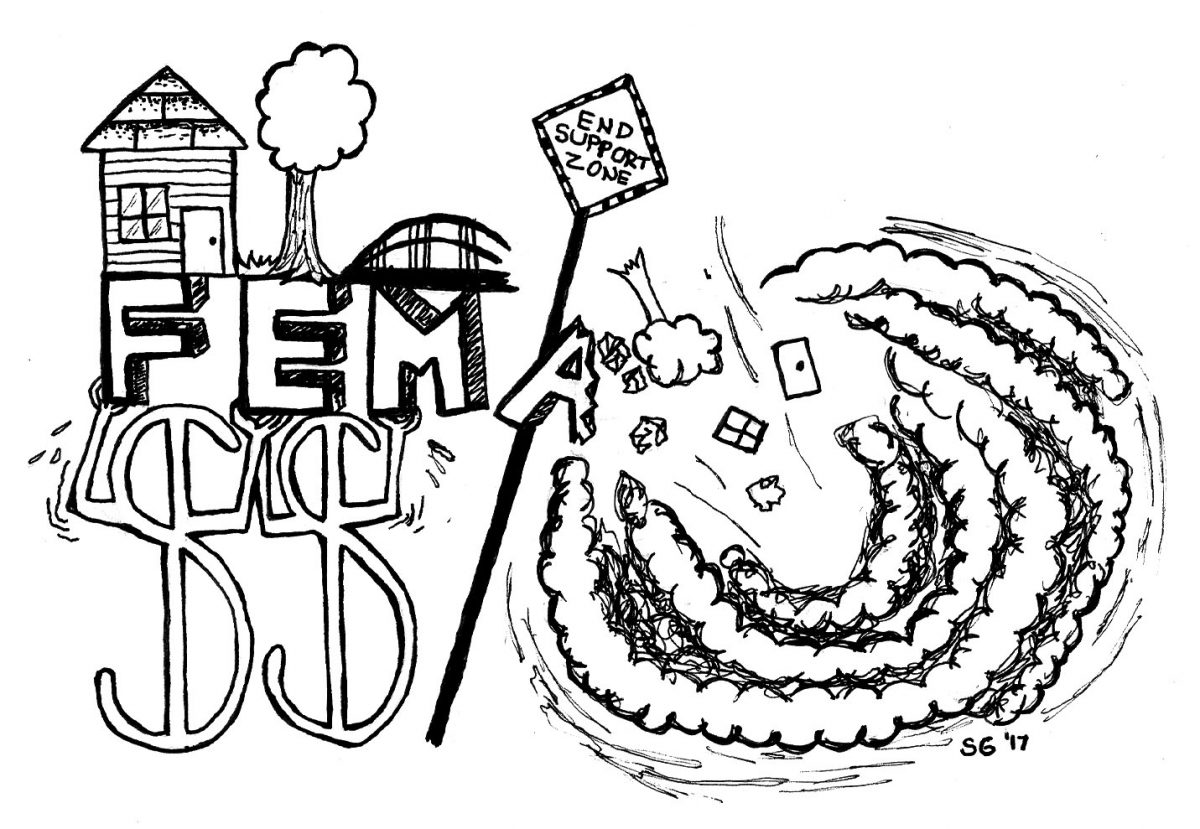FEMA still falls short 12 years after Katrina
October 6, 2017
As much as we would like to think they can help, the harsh truth is that more often than not, government agencies like the Federal Emergency Management Agency cannot adequately provide support.
Seeing destruction firsthand in New Jersey after Hurricane Sandy, I would think relief efforts would be implemented immediately. However, what I saw was mass confusion and chaos.
While FEMA deployed nearly 2,000 “community relations specialists” to New Jersey and the surrounding areas, they had a severe “lack of training,” according to a 2013 report by ASIS Security Management.
They were so untrained that Congress passed the Sandy Recovery Improvement Act in January 2013 outlining the changes that could be made to FEMA processes to provide more effective relief efforts after a disaster.
Sandy was not the first time we saw FEMA mishandle a natural disaster. The agency was highly criticized for its delayed response to Hurricane Katrina in 2005. According to the National Oceanic and Atmospheric Association, the storm killed 1,200 people.
Thousands of people required aid after the hurricane, and FEMA officers were urged spent less than 24 hours in the area.
Trump’s odd tweet marks the beginning of the end to stay put until being dispatched. The wait was due to a need to coordinate between “federal, state and local” sectors, according to the FEMA website.
Three months later, over 6,000 people were still missing and bodies were still being found, ABC news stated in November 2005.
Many accuse former President George W. Bush of distancing himself from Katrina. When he traveled to New Orleans in December 2005, he spent less than 24 hours in the area.
Besides his apathy, Bush’s lack of response highlighted the racial divide in America.
In a Washington Post poll, 70 percent of respondents blamed Bush and federal agencies for the poor response. Additionally, 68 percent of respondents felt that the response would have been quicker if those trapped had been white.
This brings us to present day with Hurricanes Harvey, Irma and Maria. Millions of people will file for federal disaster aid, and FEMA is al- ready running out of funds.
FEMA is down to its last $1 billion dollars in funding according to Bloomberg Politics. Plus, one-third of FEMA leadership positions are unfilled, according to a Newsweek article.
Hopefully, federal agencies will learn from their mistakes to get Americans back in their homes as quickly as possible.







